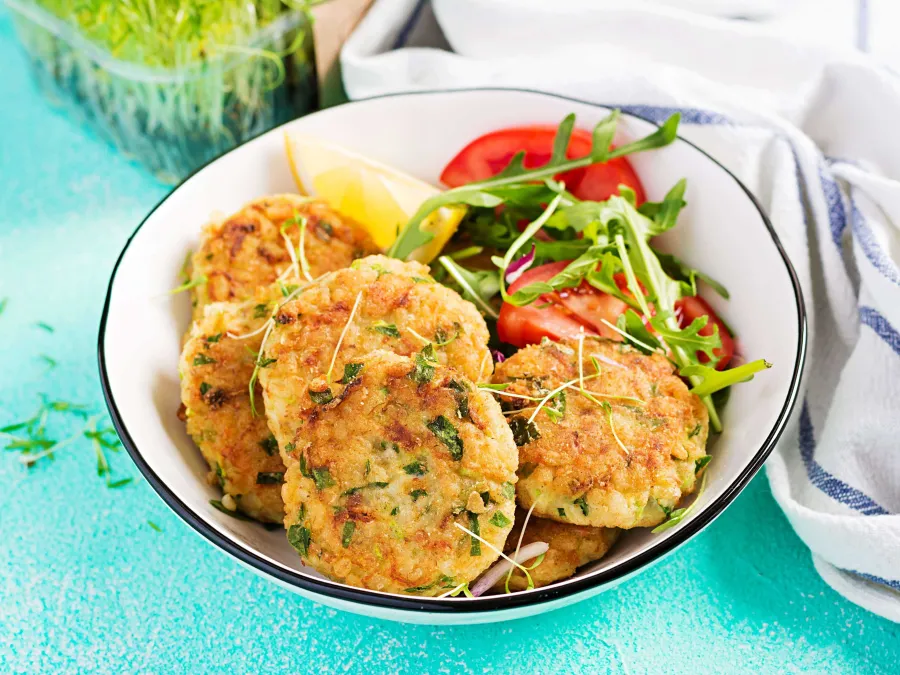Serves = 4
- 1 potato
- 1 zucchini
- 1 carrot
- 1/2 cup frozen peas
- 185g tinned tuna (in springwater)
- 2 eggs
- 1/4 cup rice flour
- 1/2 cup tasty cheese (reduced fat)
- 1 tbsn extra virgin olive oil
Quick and easy! These fritters can be made ahead of time, perfect to take to work for lunch or a reaheat dinner when you get home from a busy day.

Nutrition information (per serve)